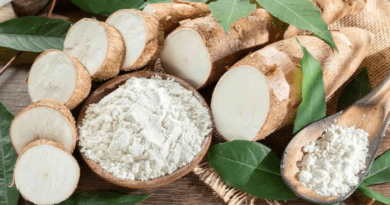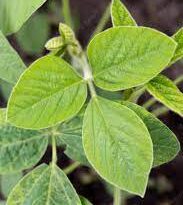The Cashew Inflorescence: Economic Importance, Uses, and By-Products
The cashew inflorescence refers to the cluster of flowers produced by the cashew tree (Anacardium occidentale). This inflorescence is where the individual cashew flowers are arranged and clustered together, typically at the ends of the branches.
Cashew inflorescences are composed of numerous small flowers that bloom in clusters. These flowers are arranged in a manner that allows for efficient pollination and fruit production. Each flower within the inflorescence has both male and female reproductive organs, making them perfect flowers capable of self-pollination.
The cashew inflorescence typically emerges during the flowering season of the cashew tree, which can vary depending on environmental conditions and geographical location. The timing of flowering is crucial for fruit set and subsequent cashew nut production.
Pollination of the cashew flowers within the inflorescence can occur through various means, including wind, insects, or manual intervention. Once pollinated, the flowers undergo fertilization, leading to the formation of cashew nuts within the cashew apple.
After fertilization, the cashew inflorescence plays a crucial role in fruit development and maturation. The cashew apple begins to grow around the developing nuts, providing protection and nutrients as they mature. Eventually, the cashew nuts reach maturity, and the cashew apple ripens, signaling that they are ready for harvest.
Understanding the structure and development of the cashew inflorescence is essential for optimizing cashew production and ensuring successful fruit yield. By studying the inflorescence, researchers and farmers can identify factors that influence flowering, pollination, and fruit set, ultimately leading to improved cultivation practices and higher yields.
The Economic Importance and Uses of Cashew Inflorescence

1. Cashew Nut Production: Cashew inflorescence is crucial for cashew nut production, as it bears the flowers that develop into cashew nuts, a valuable commodity traded globally.
2. Pollination: Cashew inflorescence facilitates pollination by attracting pollinators such as bees, butterflies, and birds, ensuring fruit set and optimal yield in cashew orchards.
3. Honey Production: Bees pollinate cashew inflorescence and produce honey from the nectar, contributing to the apiculture industry and providing additional income sources for beekeepers.
4. Agricultural Research: Cashew inflorescence is studied for its morphology, physiology, and reproductive biology, contributing to agricultural research, breeding programs, and crop improvement efforts.
5. Cashew Processing Industry: Cashew inflorescence supports the cashew processing industry by supplying raw materials for nut production, processing, and value-added products.
6. Horticulture: Cashew inflorescence enhances horticultural practices by promoting biodiversity, soil fertility, and ecosystem services in cashew orchards and agroforestry systems.
7. Culinary Decoration: Cashew inflorescence is used as a decorative element in culinary presentations, garnishing dishes, desserts, and beverages with its attractive appearance and delicate blooms.
8. Cultural Significance: Cashew inflorescence holds cultural significance in various societies, symbolizing fertility, prosperity, and abundance, and featuring in religious rituals, festivals, and ceremonies.
9. Ecotourism: Cashew inflorescence attracts tourists interested in ecotourism experiences, offering opportunities for flower viewing, nature walks, and agricultural tours in cashew-growing regions.
10. Seed Production: Cashew inflorescence produces seeds that can be collected and propagated to establish new cashew orchards, supporting agricultural expansion and rural development.
11. Soil Conservation: Cashew inflorescence contributes to soil conservation efforts by promoting soil aggregation, erosion control, and organic matter decomposition in agricultural landscapes.
12. Wildlife Habitat: Cashew inflorescence attracts pollinators and provides habitat and forage resources for diverse wildlife species, enhancing biodiversity in cashew-growing regions.
13. Agroforestry: Cashew inflorescence enhances agroforestry systems by integrating cashew trees with other crops, promoting sustainable land use practices and ecosystem resilience.
14. Landscape Ornamentation: Cashew inflorescence beautifies landscapes with its colorful blooms and aesthetic appeal, enhancing urban green spaces, gardens, and parks.
15. Climate Resilience: Cashew inflorescence contributes to climate resilience in agricultural systems by adapting to environmental stressors such as drought, heat, and fluctuating temperatures.
16. Rural Livelihoods: Cashew inflorescence supports the livelihoods of millions of farmers, laborers, and workers involved in cashew cultivation, harvesting, processing, and trade.
17. Environmental Education: Cashew inflorescence provides opportunities for environmental education and awareness-raising activities, highlighting the importance of biodiversity conservation and sustainable agriculture.
Read Also: Cabbage Aphid: Description, Damages Caused, Control and Preventive Measures
The Products and By-products That Can Be Derived From Cashew Inflorescence

1. Cashew Nuts: Cashew inflorescence bears the flowers that develop into cashew nuts, which are harvested, processed, and sold as raw nuts or further processed into various products.
2. Honey: Bees pollinate cashew inflorescence and produce honey from the nectar, which is harvested and marketed as a natural sweetener and nutritional supplement.
3. Culinary Decoration: Cashew inflorescence is used as a decorative element in culinary presentations, garnishing dishes, desserts, and beverages with its attractive appearance and delicate blooms.
4. Perfume: Cashew flower extracts are used in perfumery and cosmetics for their floral fragrance, adding aromatic notes to perfumes, colognes, and personal care products.
5. Medicinal Extracts: Extracts from cashew inflorescence are used in traditional medicine practices for their anti-inflammatory, antipyretic, and expectorant properties, treating various ailments and health conditions.
6. Seedlings: Cashew inflorescence produces seeds that can be collected and used to propagate seedlings for establishing new cashew orchards and expanding agricultural production.
7. Herbal Tea: Dried cashew inflorescence is used to brew herbal tea, which is consumed for its soothing aroma and potential health benefits, such as relaxation and digestion aid.
8. Aromatic Potpourri: Dried cashew inflorescence is used in potpourri blends, adding fragrance and visual appeal to home decor and aromatherapy applications.
9. Soil Amendments: Cashew inflorescence residues, such as fallen petals and spent blooms, can be composted and used as organic soil amendments to improve soil structure and fertility in agricultural and horticultural settings.
10. Landscape Ornamentation: Cashew inflorescence enhances landscape ornamentation with its colorful blooms and aesthetic appeal, used in floral arrangements, bouquets, and centerpieces for weddings and events.
Read Also: How to Grow Fodder in 6 Days and Feed your Animals on the 7th Day
Frequently Asked Questions (FAQ’s) About Cashew Inflorescence

1. How do cashew inflorescences contribute to cashew nut production?
Cashew inflorescences bear the flowers that develop into cashew nuts after successful pollination and fertilization, essential for cashew nut production in cashew orchards.
2. What role do bees play in cashew inflorescence pollination?
Bees pollinate cashew inflorescences by transferring pollen from male to female flowers, facilitating fertilization and fruit set, which is necessary for cashew nut development.
3. Can cashew inflorescences be harvested for any products?
While cashew inflorescences themselves are not typically harvested for products, their presence is essential for cashew nut production, honey production, and ecological services such as pollination.
4. Are cashew inflorescences fragrant?
Yes, cashew inflorescences emit a mild, pleasant fragrance during blooming, attracting pollinators such as bees and butterflies with their nectar and scent.
5. How long do cashew inflorescences bloom?
Cashew inflorescences typically bloom for a few days to a week, depending on environmental conditions such as temperature, humidity, and sunlight, during the cashew tree’s flowering season.
6. Do cashew inflorescences have any cultural significance?
Cashew inflorescences hold cultural significance in various societies, symbolizing fertility, prosperity, and abundance, and featuring in religious rituals, festivals, and ceremonies.
7. Can cashew inflorescences be dried or preserved?
While cashew inflorescences can be dried for decorative purposes, their delicate nature may make preservation challenging. Dried cashew inflorescences are sometimes used in floral arrangements and crafts.
8. Are there any environmental benefits associated with cashew inflorescences?
Yes, cashew inflorescences contribute to ecosystem services such as pollination, biodiversity support, and soil conservation, enhancing environmental sustainability in cashew orchards and agroforestry systems.
9. How do cashew inflorescences impact wildlife habitat?
Cashew inflorescences attract pollinators such as bees, butterflies, and birds, providing habitat and forage resources for diverse wildlife species, contributing to biodiversity conservation in agricultural landscapes.
10. What is the significance of cashew inflorescences in agricultural research?
Cashew inflorescences are studied for their morphology, physiology, and reproductive biology, contributing to agricultural research, breeding programs, and crop improvement efforts aimed at enhancing cashew production and resilience.
Read Also: Practical Steps to Convert Printer Cartridges Wastes into New Printer Cartridges








